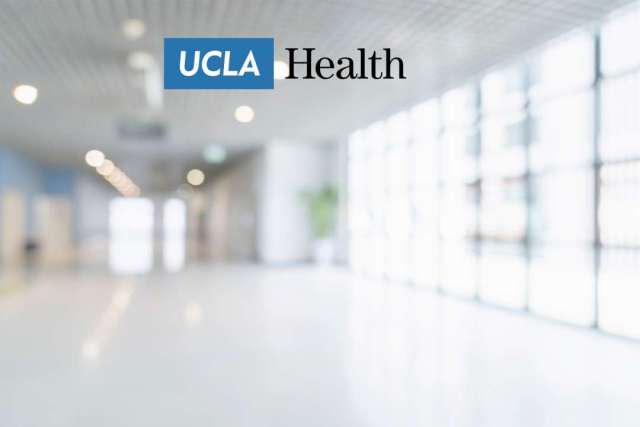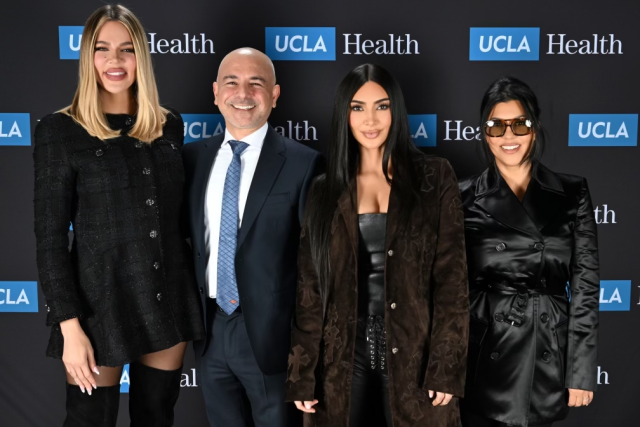The brave new world of stem cell research dangles the exciting potential for a host of leading-edge treatments that may one day help cure debilitating diseases such as Alzheimer's, Parkinson's and other maladies that today cannot be treated with modern medicine.
However, not much thought has been given to how those products might be regulated and how issues of legal liability may be addressed in a way that encourages scientific innovation but also protects the patients for whom these treatments might provide great relief.
Now, an attorney and law professor from the UCLA School of Law and a member of the Eli and Edythe Broad Center of Regenerative Medicine and Stem Cell Research at UCLA has developed a roadmap that could help guide researchers, stem-cell product manufacturers, physicians and patients through the complex maze of imagining, creating and developing stem cell products and using them to treat disease.
"Stem cell research and its eventual applications hold enormous promise, but they also carry some significant risks," said distinguished professor of law Stephen R. Munzer, whose new article appears April 11 in the Boston University Journal of Science and Technology Law. "Our understanding of the number and gravity of those risks right now is incomplete and uncertain. Developing a plan now that details how to deal with such issues as stem-cell product liability is important because we need to think carefully and rationally about how to address these issues before the market is flooded with products."
In the article, Munzer offers suggestions on how stem cell products might be classified in the future; examines how applying existing product liability rules to stem cell products is inadequate; details the economic considerations for a stem-cell liability regime; and offers his views of what the law should be on liability for stem cells.
"One thing I detect from the stem cell scientists I've spoken to is a certain amount of judicious caution," he said. "What they don't want is to have people rushing to get something approved by the FDA and then see it result in unanticipated, unforeseeable problems."
One of the byproducts of that judicious caution, both of the risk of liability and the potential risk to patients, Munzer said, has been that scientists and biotechnology companies are initially going after the so-called low-hanging fruit of stem cell treatments — those projects that appear to have the least amount of risk and the maximum benefit, such as treatments for retinal disease as opposed to organ regeneration.
In the article, Munzer also emphasizes the "ethics of risk," or having all those involved from the conception of an idea for a stem cell product to its eventual development, manufacture and administration, accountable for the risks they may be imposing on patients.
"The scientists who come up with the ideas for these products, the people who design them, the biotech companies that manufacture them and produce them in large numbers, and the treating physicians who ultimately will be administering these treatments all have to be accountable, as well as the FDA, which is charged with regulating them," Munzer said.
Munzer likened the anticipation for potential stem cell products to the excitement created in the 1980s and 1990s over early gene therapies and what may have been a rush to test the therapies without adequately considering the risks. That potential for new gene therapy treatments was temporarily derailed after Jesse Gelsinger, an 18-year-old, died in 1999 as a result of treatment in a gene therapy trial.
"Existing blood products, growth factors, vaccines — we've got more understanding of how those things work, and that is not true in the case of stem cells," Munzer said. "We want to create a strict liability regime that encourages innovation but on the other hand does not encourage it so much that products are put on the market long before they should be."
Munzer suggests creating a social-insurance arrangement that would pool resources from everyone involved, from the scientists to the manufacturers to the treating physician and the patients, contributing to a fund that could eventually be used to compensate those harmed by stem cell products during their testing. His proposal is similar to the National Vaccine Injury Compensation Program, created in 1988 as a no-fault alternative to the traditional tort system created to ensure an adequate supply of vaccines, stabilize vaccine costs, and establish and maintain an accessible and efficient forum for individuals found to be injured by certain vaccines.
Munzer also recommends limiting punitive damages in stem cells cases, but only if the product has been approved by the U.S. Food and Drug Administration, the FDA regulatory requirements have been strictly followed, the risks of the products have become more understood and predictable, and the FDA has gained sufficient experience in regulating the products.
Munzer's liability roadmap could be of value to courts, lawyers and regulatory bodies in navigating what is to come in stem cell product development. It also should be considered a dynamic document, he said, that responds to what is learned in the coming decades about the creation and development of stem cell products.
"It is important to address these issues this early with as much insight as we can bring to it, recognizing that there will be, as the years go on, more information and a better understanding of what we're doing," he said. "Starting to address this now instead of waiting five to 10 years is vital, as it will be much easier to prevent potential mishaps and messes from occurring than it will be to try to clean them up later."
Munzer's article attempts to tackle problems that are on or just beyond the horizon, and looks to what has happened in the past for guidance.
"The product liability claims regarding stem cell products will require the most exacting attention to their safety and effectiveness that is possible without imposing an undue burden on manufacturers," the study states. "No existing category offers a perfect legal model for stem cell products. However, we can tease out pertinent features of these categories for tort litigation to show what might work well for stem cell products. Definitive recommendations must wait for these products to appear on the market and for their risks and rewards to become better understood over the coming decades."
The Eli and Edythe Broad Center of Regenerative Medicine and Stem Cell Research: UCLA's stem cell center was launched in 2005 with a UCLA commitment of $20 million over five years. A $20 million gift from the Eli and Edythe Broad Foundation in 2007 resulted in the renaming of the center. With more than 200 members, the Broad Stem Cell Research Center is committed to a multidisciplinary, integrated collaboration among scientific, academic and medical disciplines for the purpose of understanding adult and human embryonic stem cells. The center supports innovation, excellence and the highest ethical standards focused on stem cell research with the intent of facilitating basic scientific inquiry directed toward future clinical applications to treat disease. The center is a collaboration of the David Geffen School of Medicine at UCLA, UCLA's Jonsson Cancer Center, the UCLA Henry Samueli School of Engineering and Applied Science and the UCLA College of Letters and Science.
For more news, visit the UCLA Newsroom and follow us on Twitter.



